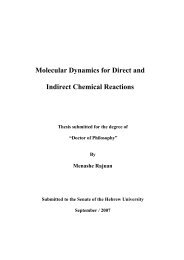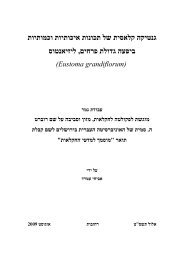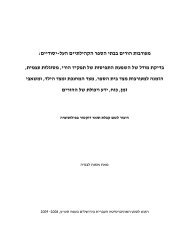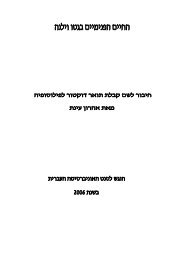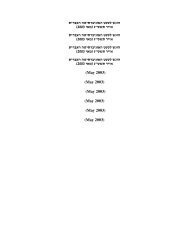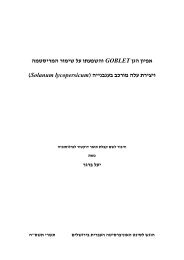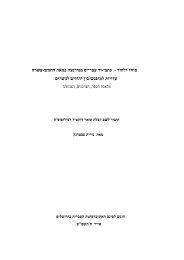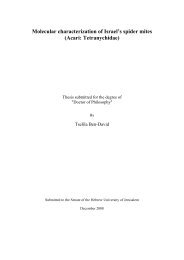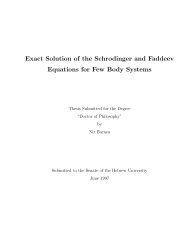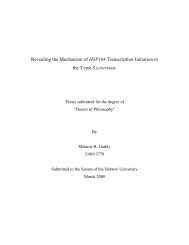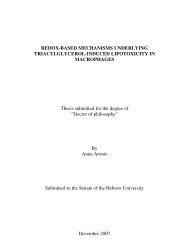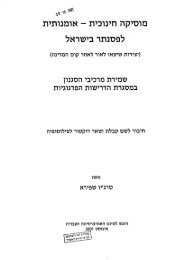The Autecology of Eudiaptomus cf drieschi (Poppe & Mrazek 1895 ...
The Autecology of Eudiaptomus cf drieschi (Poppe & Mrazek 1895 ...
The Autecology of Eudiaptomus cf drieschi (Poppe & Mrazek 1895 ...
You also want an ePaper? Increase the reach of your titles
YUMPU automatically turns print PDFs into web optimized ePapers that Google loves.
3. Results<br />
3.1 Descriptive taxonomy (General)<br />
<strong>The</strong> diaptomid copepods are members <strong>of</strong> the most common group <strong>of</strong> freshwater, filter<br />
feeding calanoids, the Diaptomidae. <strong>The</strong>re are over 400 species in about 50 genera.<br />
<strong>The</strong>y play an important role in freshwater ecosystems as food for fish and invertebrate<br />
predators. As is typical in crustacean morphology, the diaptomid metasome (prosome)<br />
or cephalothorax is divided into a head and thorax, and the urosome is made up <strong>of</strong> the<br />
abdominal and genital segments. <strong>The</strong> urosome terminates with a pair <strong>of</strong> structures called<br />
caudal rami, which end in caudal setae (Williamson 1991). <strong>The</strong> metasome may have<br />
between 4 to 6 segments depending on the species. <strong>The</strong> head bears the first antenna or<br />
antennules, second antenna, mandibles, maxillules, and maxillae. <strong>The</strong> thorax has the<br />
maxillipeds, four pairs <strong>of</strong> swimming legs and a pair <strong>of</strong> modified 5 th legs. Diaptomids are<br />
sexually dimorphic. <strong>The</strong> female 5 th legs are symmetrical and well developed (Fig. 2a),<br />
while the male 5 th legs are highly asymmetrical and modified for reproduction (Fig. 2b).<br />
<strong>The</strong> setation and armature <strong>of</strong> the male right anntenule is also <strong>of</strong> key significance in<br />
species identification (Fig 2c-d). <strong>The</strong> first antennae posses both chemoreceptors and<br />
mechanoreceptors that function in feeding, locomotion, and reproduction. <strong>The</strong>y are not<br />
flexible and are raised or relaxed by increased or decreased blood pressure.<br />
<strong>The</strong> shape and armature <strong>of</strong> the female genital and last thoracic segment are<br />
important morphological features for distinguishing between species (Fig 2e). <strong>The</strong><br />
female genital segment is composed <strong>of</strong> 3 fused segments. <strong>The</strong> antennules <strong>of</strong> the male<br />
diaptomids are asymmetrical, the right antennula is geniculate for grasping the female<br />
during copulation (Fig 3b). It is made up <strong>of</strong> 21-22 segments that can be divided into<br />
three sections.



